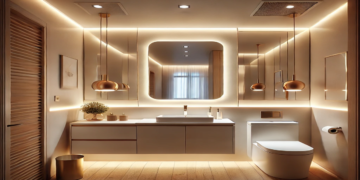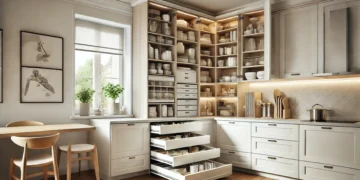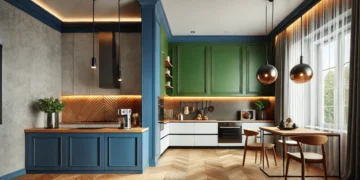A living room is always full of life, whether it is the place where friends and family come together or where memories are created. The TV is always the main part of many living rooms. The little television set can be placed in the perfect position, and the room will look and feel different. This guide will help you figure out how the best TV in the living room can be done.
Why TV Placement Matters
TV placement in the living room is not only a matter of design, but it also impacts the use of the space by the people and how they feel while inside. Proper TV placement in a living room setup can have these advantages, among others:
- Furnish the room with a comfortable climate.
- Improve the watching experience.
- Improve the room layout.
- Promote better air flow in the space.
Factors to Consider for TV Placement in the Living Room
Room Size and Shape
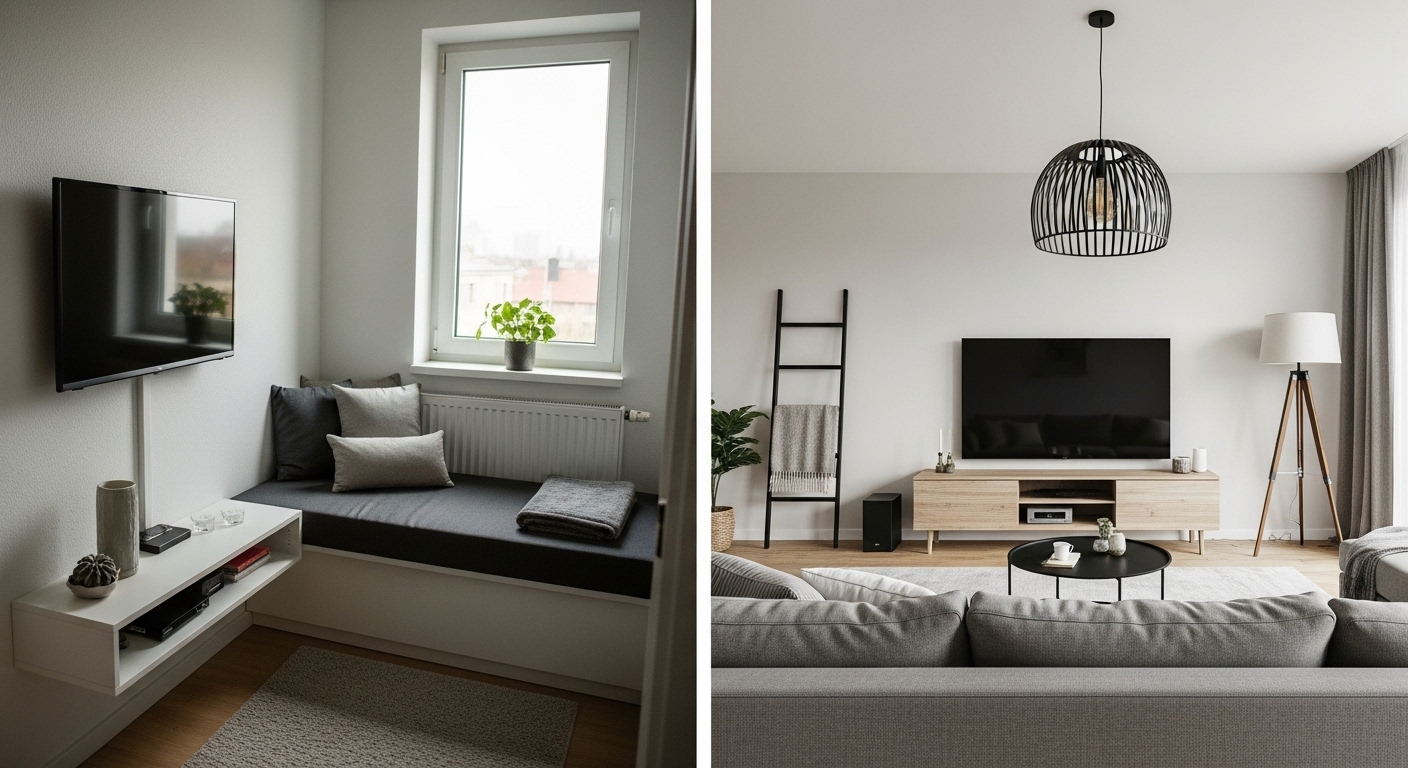 The size and shape of the room makes a significant difference in how to place the TV and where to put the TV. In a small room, TV placement in living room can be narrow. A more spacious room means you can place the TV in different places.
The size and shape of the room makes a significant difference in how to place the TV and where to put the TV. In a small room, TV placement in living room can be narrow. A more spacious room means you can place the TV in different places.
Lighting
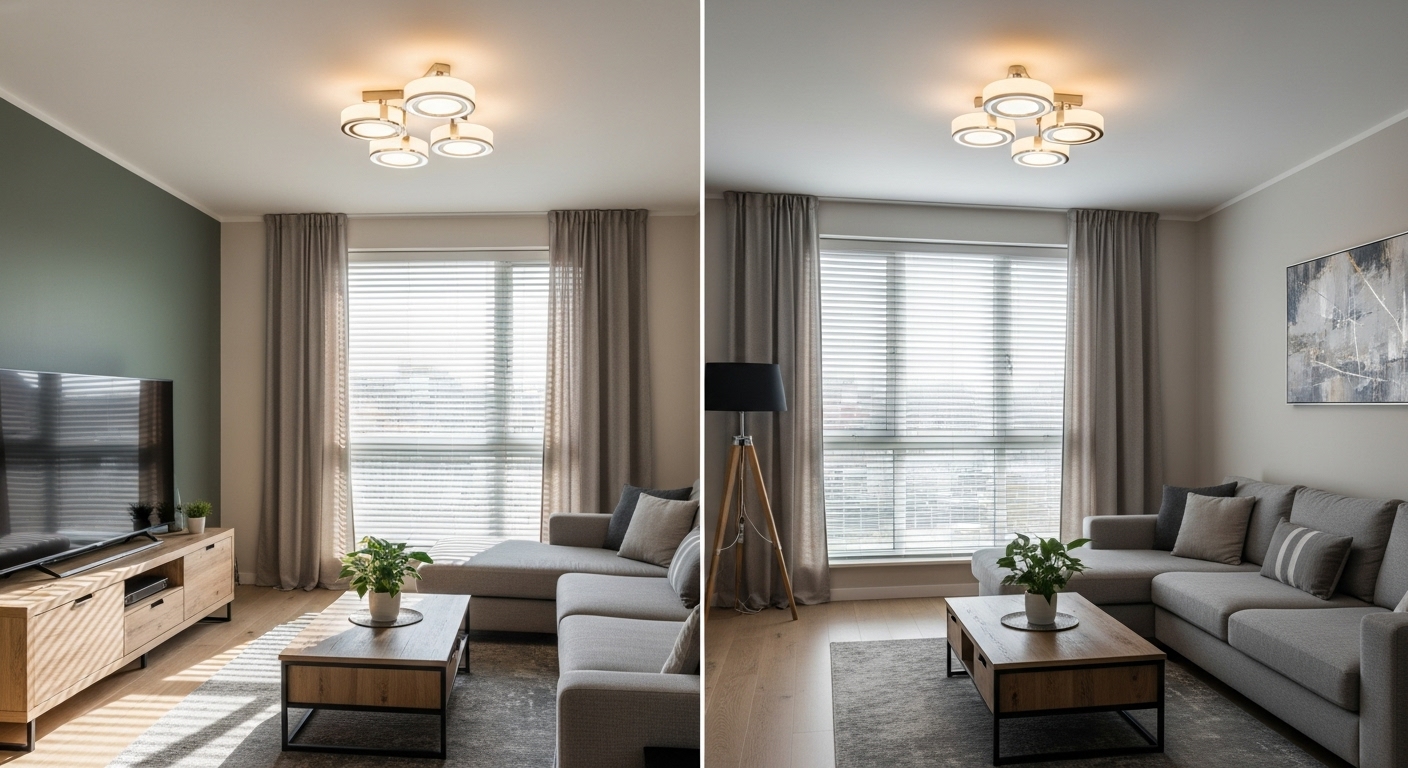 The brightness of the light can often make it difficult for you to see the TV screen. Don’t place the television in living room where the sunlight or lamps shouldn’t cause any glare. Check out our guide on kitchen lighting ideas to get similar tips on lighting the different areas of your house.
The brightness of the light can often make it difficult for you to see the TV screen. Don’t place the television in living room where the sunlight or lamps shouldn’t cause any glare. Check out our guide on kitchen lighting ideas to get similar tips on lighting the different areas of your house.
Viewing Distance
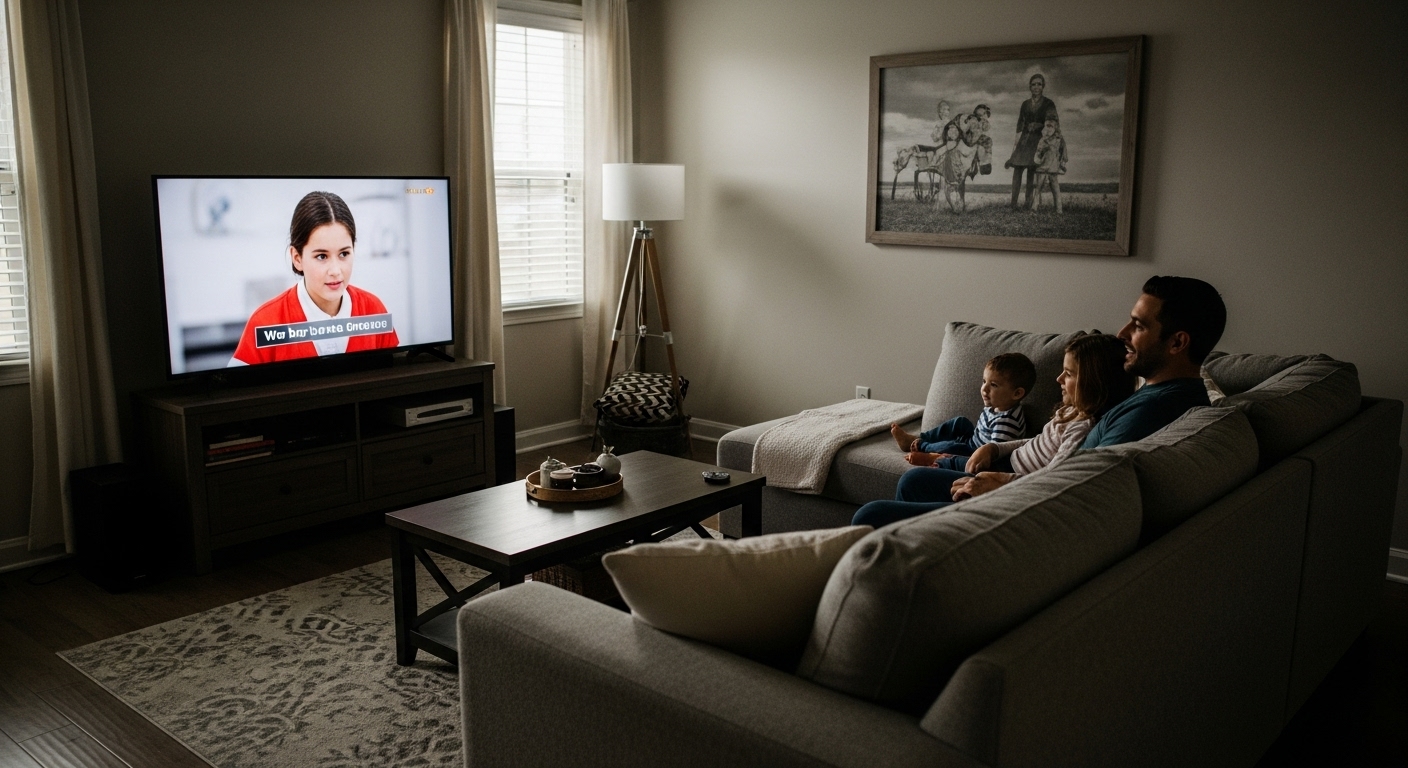 The distance between the TV and the seating area determines the ease and comfort of watching. Too close, children might get their eyes damaged. At the same time, too far, people cannot see the smallest details. A good rule is to sit on one side 1.5 to 2.5 times the diagonal width of the scooter.
The distance between the TV and the seating area determines the ease and comfort of watching. Too close, children might get their eyes damaged. At the same time, too far, people cannot see the smallest details. A good rule is to sit on one side 1.5 to 2.5 times the diagonal width of the scooter.
For a comprehensive guide on optimal TV viewing distance and height based on TV size and resolution, consult expert resources.
Furniture Layout
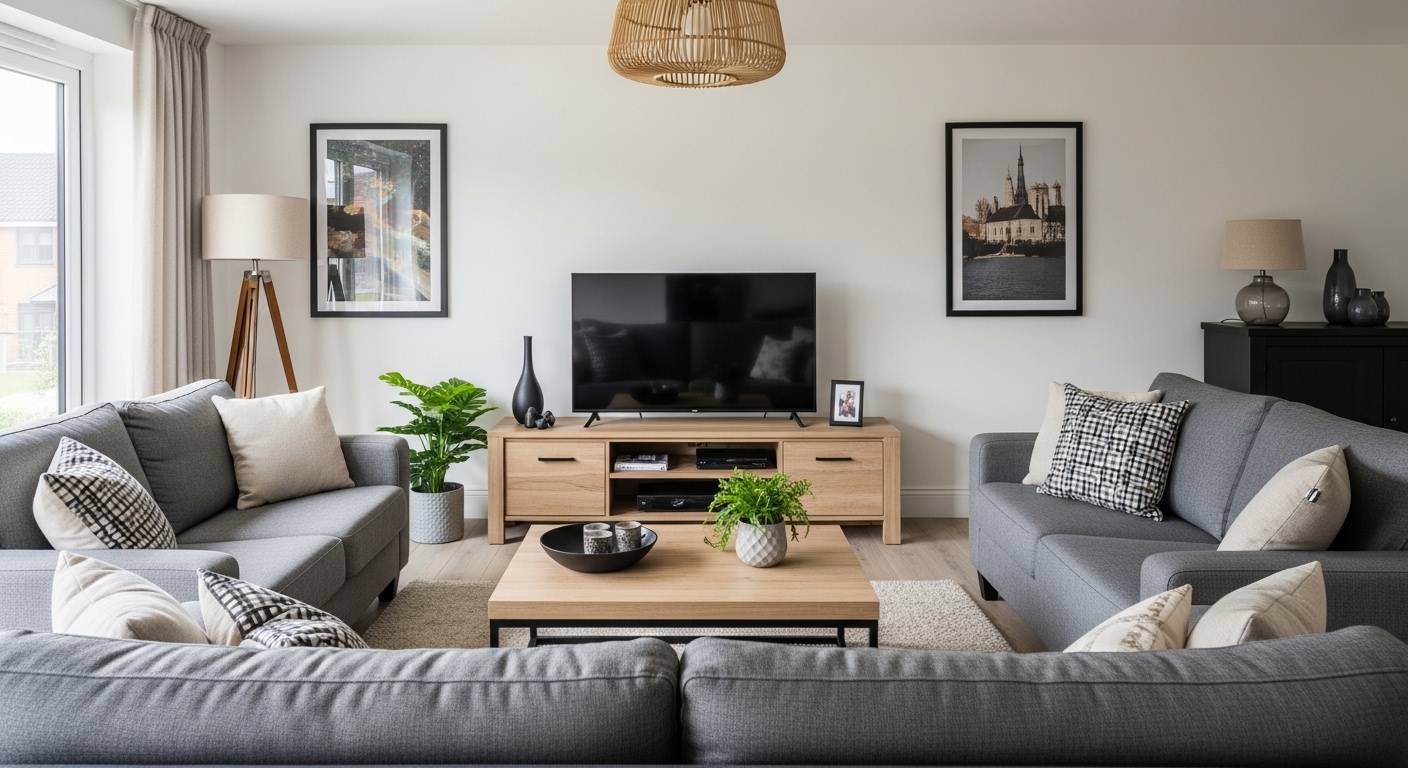 The TV area should have a layout that engages both watching and interaction. Think about how the furniture suits different TV placement options.
The TV area should have a layout that engages both watching and interaction. Think about how the furniture suits different TV placement options.
Popular TV Placement Options
1. Above the Fireplace
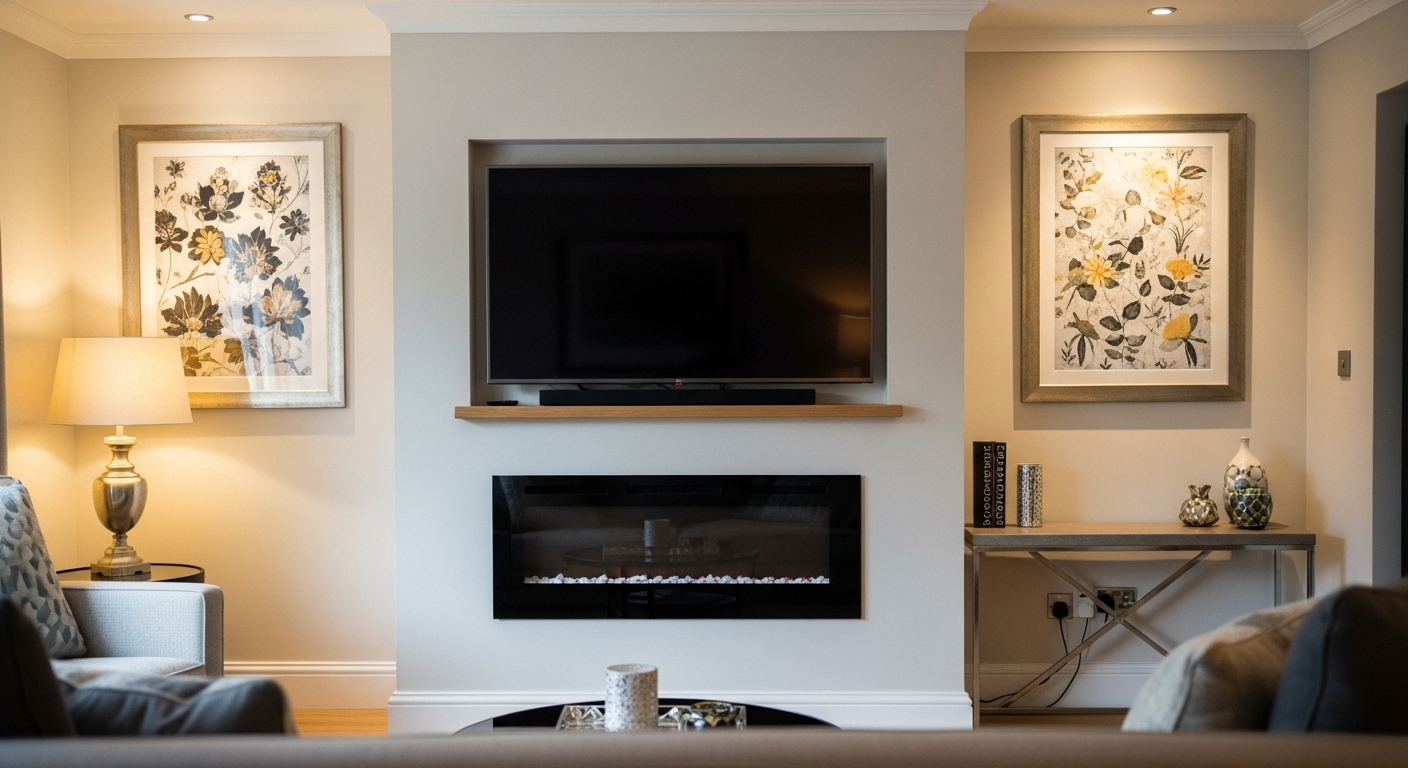 A multitude opt for placing the TV on the fireplace. This TV placement in the living room gives free space and creates a kind of focus. But it can be difficult to get the right angle for proper viewing at a height like another person’s head. Also, check our guide on small TV lounge ideas to get more helpful insights.
A multitude opt for placing the TV on the fireplace. This TV placement in the living room gives free space and creates a kind of focus. But it can be difficult to get the right angle for proper viewing at a height like another person’s head. Also, check our guide on small TV lounge ideas to get more helpful insights.
2. On a Media Console
 The media console is one of the best TV placement options in living room. It offers storage, and at the same time, it helps to elevate the TV to the perfect height where it can be comfortably viewed.
The media console is one of the best TV placement options in living room. It offers storage, and at the same time, it helps to elevate the TV to the perfect height where it can be comfortably viewed.
3. In a Corner
 If there isn’t much wall space or the room is small you can put the TV in the corner. It’s a smart move when you are figuring out where to place TV in living room with no empty wall space.
If there isn’t much wall space or the room is small you can put the TV in the corner. It’s a smart move when you are figuring out where to place TV in living room with no empty wall space.
4. On a Swivel Mount
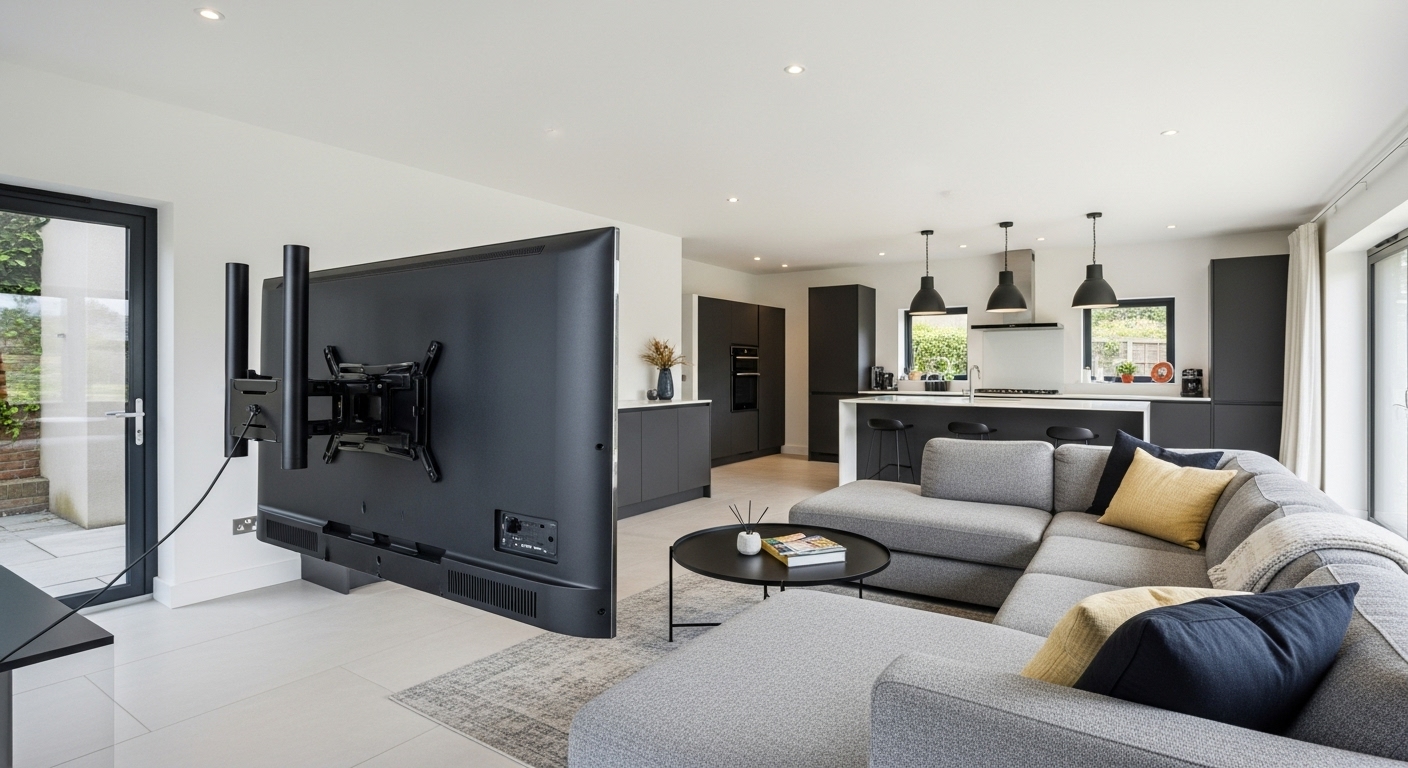 A TV stand that swivels can be moved to direct the TV to a different area. This adaptable TV position living room variant is useful in large, open spaces.
A TV stand that swivels can be moved to direct the TV to a different area. This adaptable TV position living room variant is useful in large, open spaces.
5. In a Built-in Cabinet
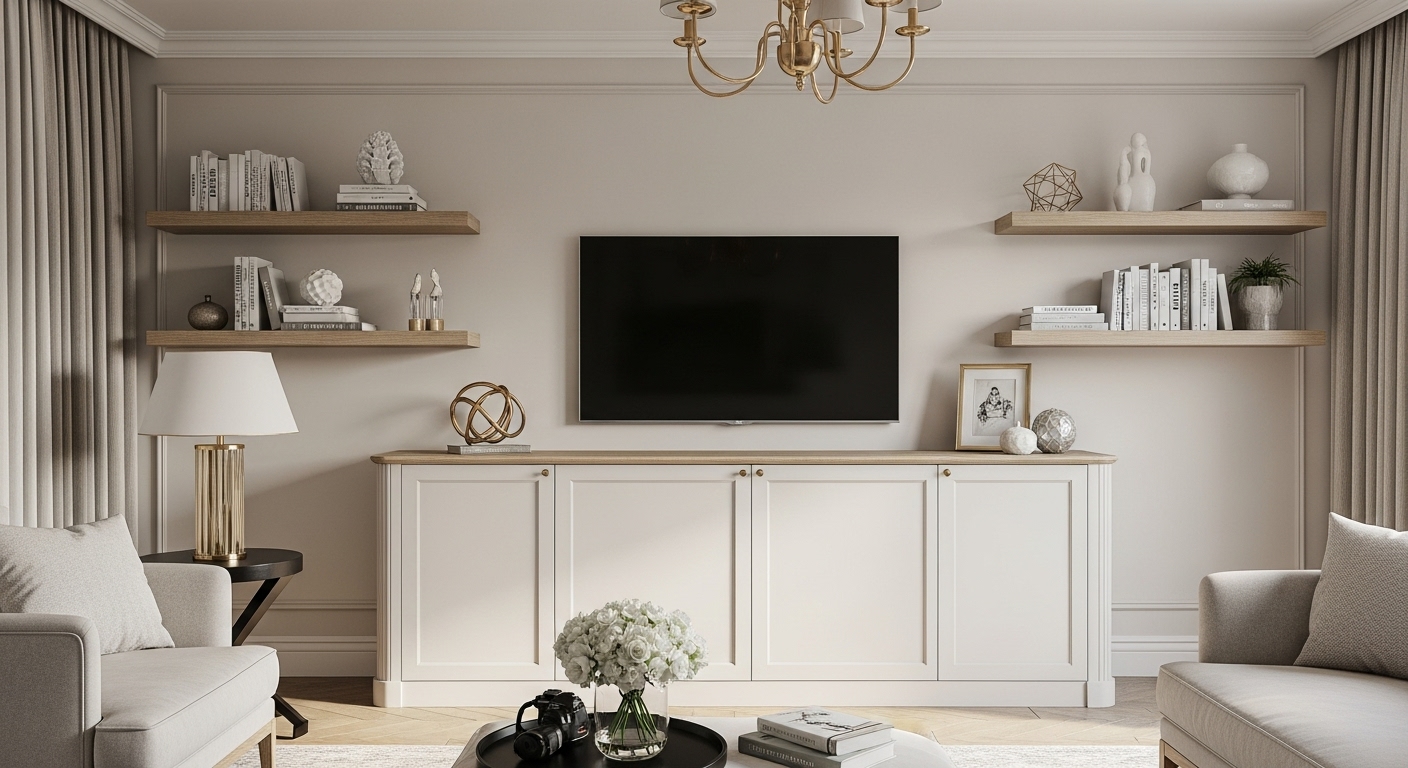 The built-in cabinets not only perform their hide and show roles effectively but also they can hide away the TV when it is not used. That could be of assistance in the room’s style because no attention is drawn to a particular object like the television in living room that is not even watched.
The built-in cabinets not only perform their hide and show roles effectively but also they can hide away the TV when it is not used. That could be of assistance in the room’s style because no attention is drawn to a particular object like the television in living room that is not even watched.
Tips for the Best TV Placement
Consider the Room’s Focal Point
 TV can be the main focus, but not long ago, a fireplace or some other wonderful view was usually the star. The living room TV placement should blend with or enrich the other focal points.
TV can be the main focus, but not long ago, a fireplace or some other wonderful view was usually the star. The living room TV placement should blend with or enrich the other focal points.
Think About Traffic Flow

The TV location shouldn’t block walkways. People should be able to walk around the room without getting hurt or tripping over things outside of the TV area.
Hide the Cords
 It doesn’t matter where their final location will be; the need for cord clutter to look neat can be solved sometimes, even by creating a whole new aspect in the room. The look of the baseboard will be enough with a simple cord coating or running wires through the wall.
It doesn’t matter where their final location will be; the need for cord clutter to look neat can be solved sometimes, even by creating a whole new aspect in the room. The look of the baseboard will be enough with a simple cord coating or running wires through the wall.
Consider Multiple TV Watching Spaces
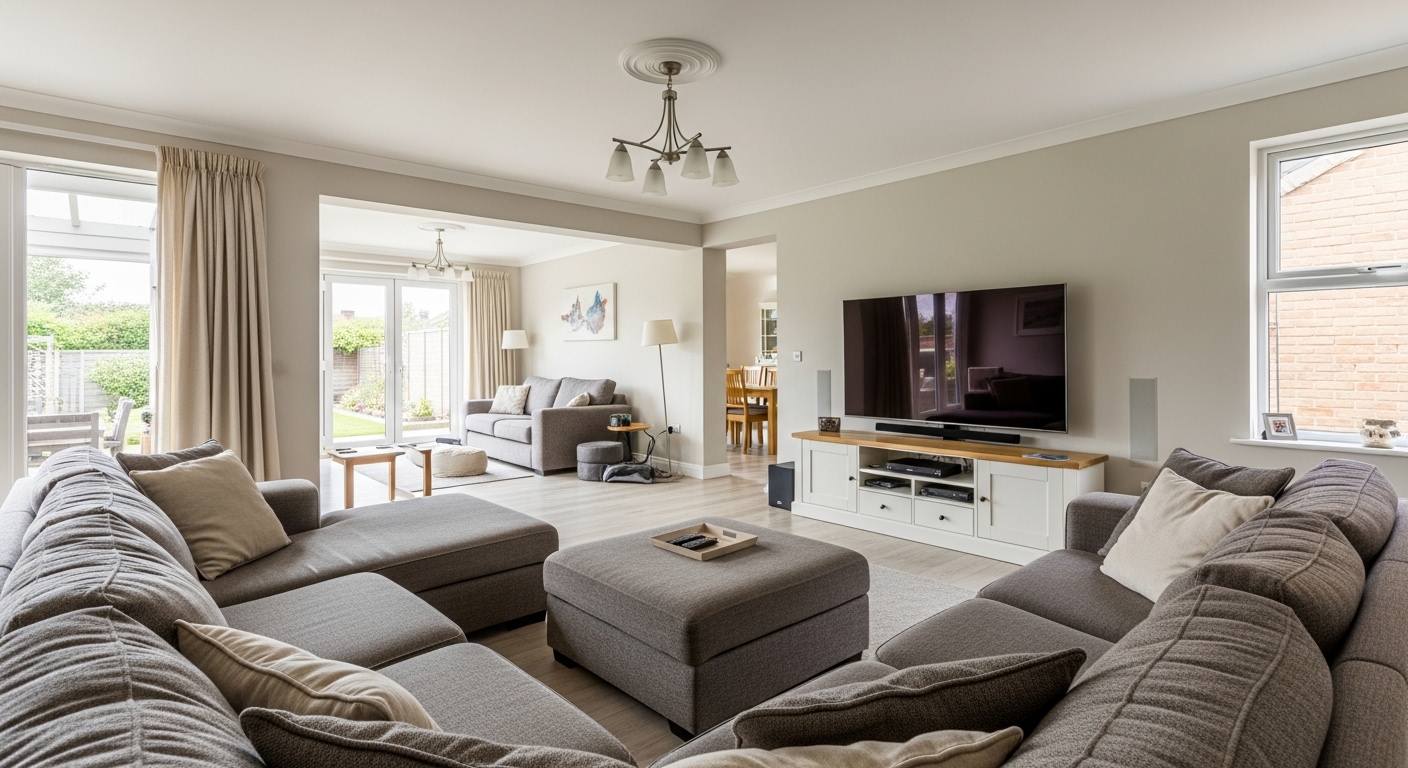 If the living room is bigger, you could have a few different seating areas. The living room adjacent screen should be able to be seen from various angles. A TV that can swivel or one that is set at the center can allow a diversity of views.
If the living room is bigger, you could have a few different seating areas. The living room adjacent screen should be able to be seen from various angles. A TV that can swivel or one that is set at the center can allow a diversity of views.
Match with Room Decoration
 Ensure the television in the living room is not a mismatch for your room’s theme. Use a TV stand or mount that goes with the decor of the room. Framed TVs also act as wall art and are used by some people to bring them into the wall of art.
Ensure the television in the living room is not a mismatch for your room’s theme. Use a TV stand or mount that goes with the decor of the room. Framed TVs also act as wall art and are used by some people to bring them into the wall of art.
Common Mistakes to Avoid
Placing the TV Too High
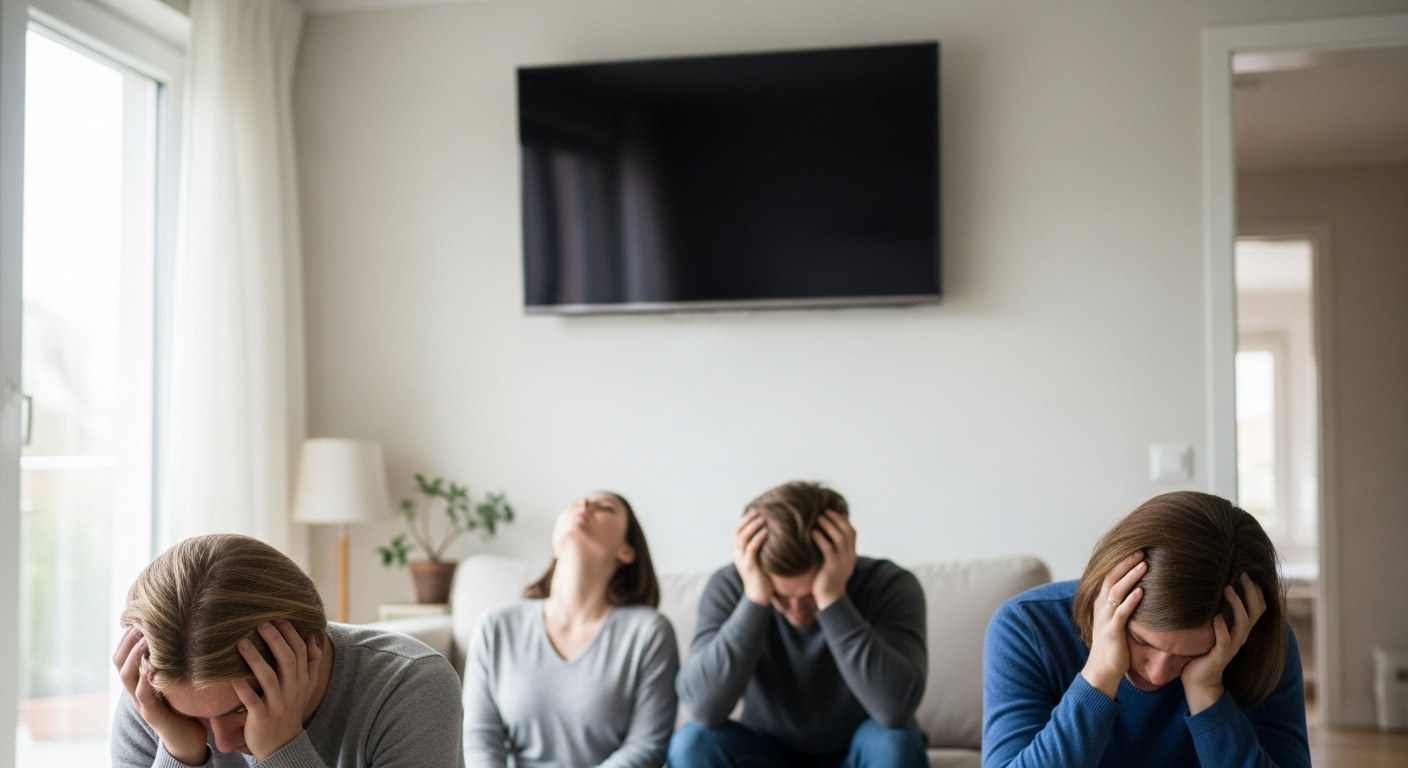 Minting the television out of line is one of the mistakes often made in TV placements in a living room. This might result in a stiff neck. When you are sitting, the screen should be at eye level.
Minting the television out of line is one of the mistakes often made in TV placements in a living room. This might result in a stiff neck. When you are sitting, the screen should be at eye level.
Disregarding Glare
 Avoiding glare can be a problem if the user does not factor in light sources. In addition to this, move the unit to different positions so that you can have the best view possible. For more practical tips on how to reduce TV glare and optimize your viewing experience, explore expert advice.
Avoiding glare can be a problem if the user does not factor in light sources. In addition to this, move the unit to different positions so that you can have the best view possible. For more practical tips on how to reduce TV glare and optimize your viewing experience, explore expert advice.
Blocking Natural Light
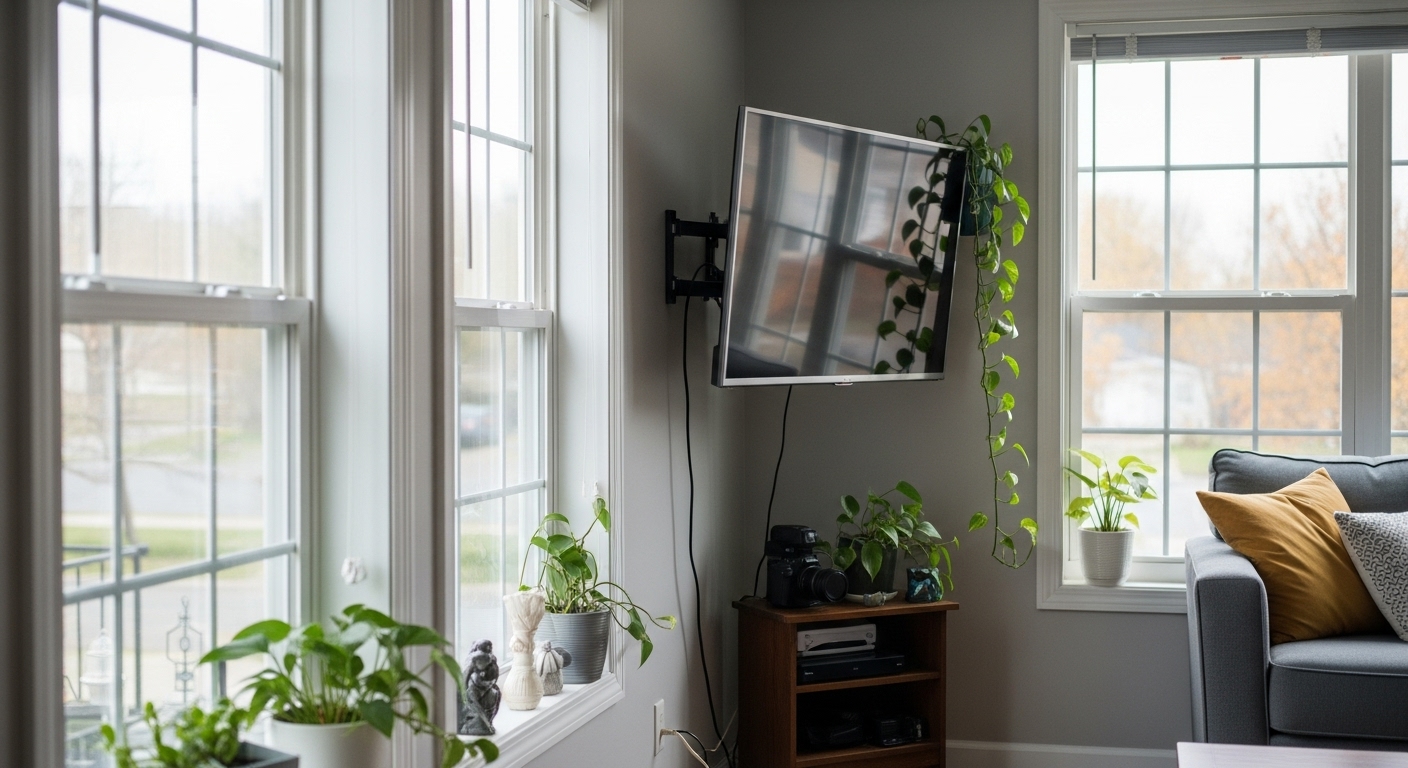 TV doesn’t suck it up in bad windows or natural light sources among the good things you could say about the sitting room with a TV. It tends to make the room feel a lot smaller and darker than it is.
TV doesn’t suck it up in bad windows or natural light sources among the good things you could say about the sitting room with a TV. It tends to make the room feel a lot smaller and darker than it is.
Ignoring Viewing Angles
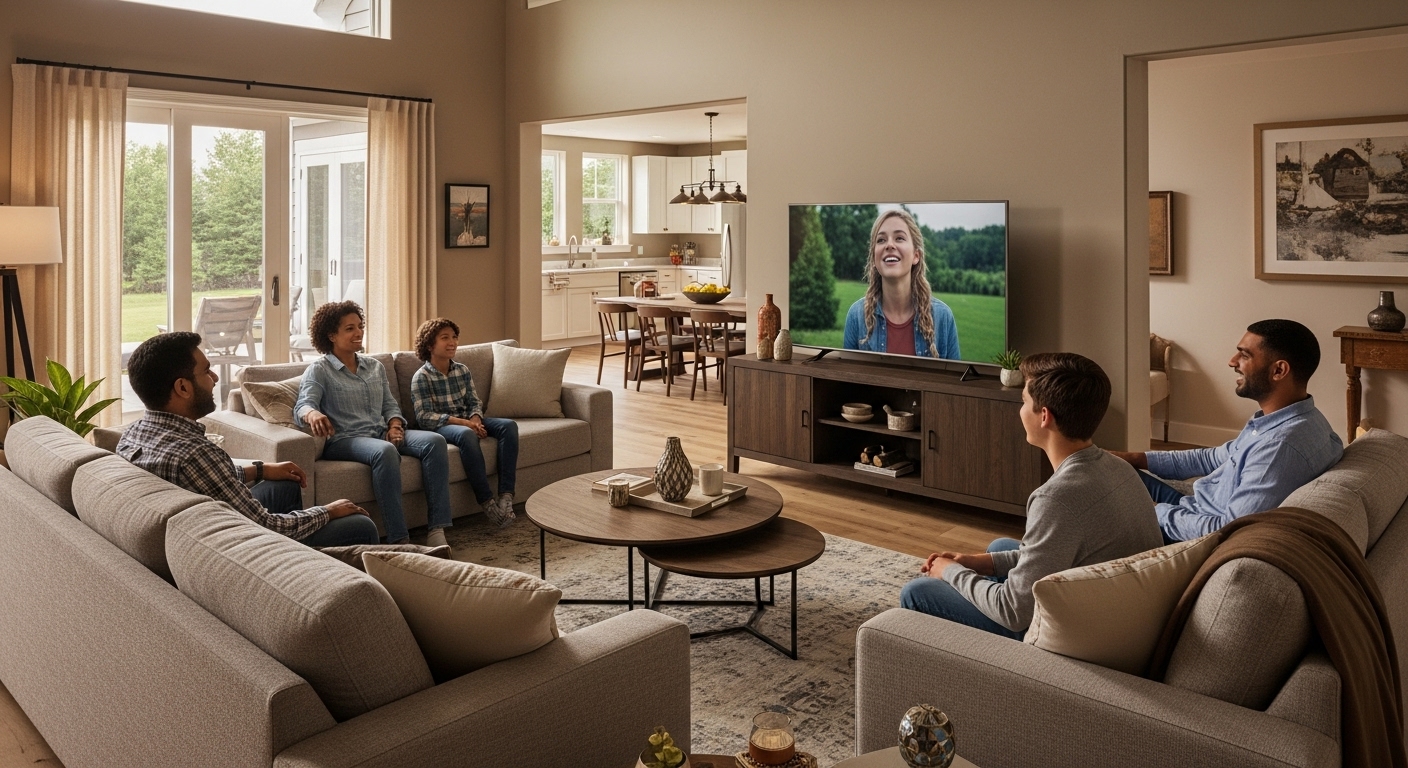 And now if I bring it up, there are some TV brands that have poor viewing angles. Please, make sure that all people can see the screen clearly where they normally sit from.
And now if I bring it up, there are some TV brands that have poor viewing angles. Please, make sure that all people can see the screen clearly where they normally sit from.
TV Placement for Different Room Layouts
Open Plan Living Spaces
 When the essential idea in open layouts is to have a defined TV area yet at the same time to create an easy flow, you will need a divider or to strategically position your furniture to carve out a nice spot for watching TV.
When the essential idea in open layouts is to have a defined TV area yet at the same time to create an easy flow, you will need a divider or to strategically position your furniture to carve out a nice spot for watching TV.
Long and Thin Living Room Layouts
 There is much to know about living room TV placement in the situation of a long and narrow room. TV wall mounting on the short wall is often a good practice for this reason as the room will look more balanced.
There is much to know about living room TV placement in the situation of a long and narrow room. TV wall mounting on the short wall is often a good practice for this reason as the room will look more balanced.
Small Living Spaces
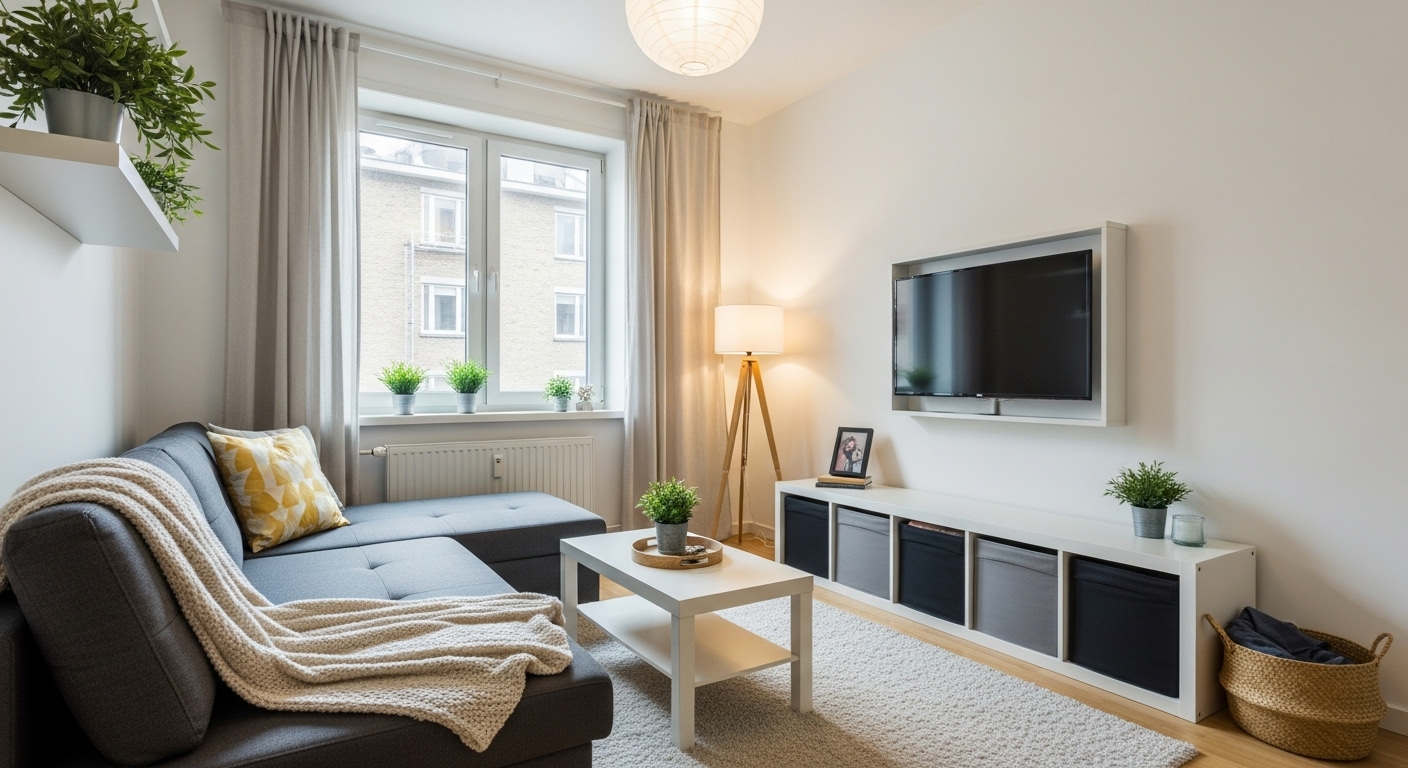 In tight niches, the use of multifunctional furniture can help. A mount that lets you flatten the screen to the wall when not in use saves space.
In tight niches, the use of multifunctional furniture can help. A mount that lets you flatten the screen to the wall when not in use saves space.
Innovative TV Placement Ideas
Hidden TV Options
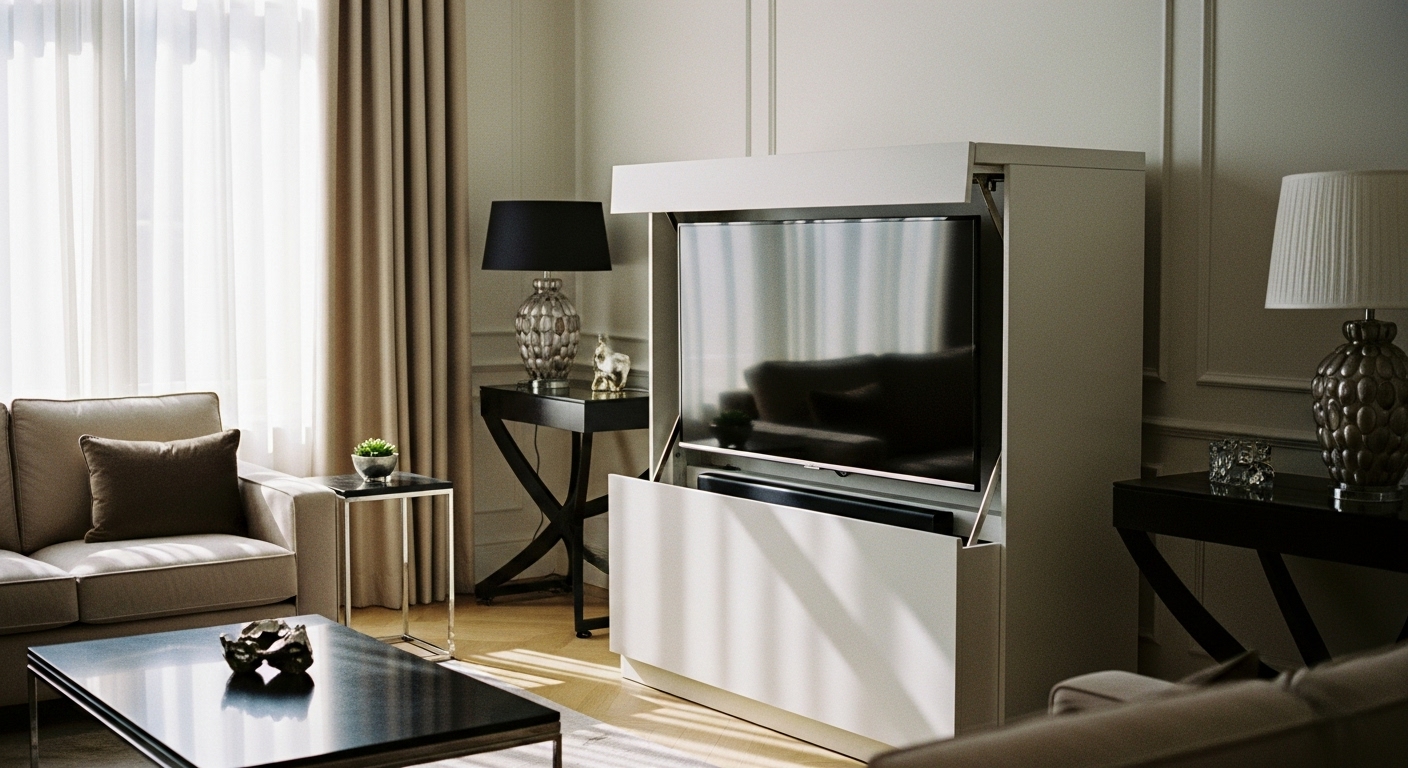 In the first place, to those who do not prefer the TV becoming a distraction are the very creative hiding solutions. Among some of them are TVs that rise from cabinets or drop down from the ceiling.
In the first place, to those who do not prefer the TV becoming a distraction are the very creative hiding solutions. Among some of them are TVs that rise from cabinets or drop down from the ceiling.
Rotating TV Mounts
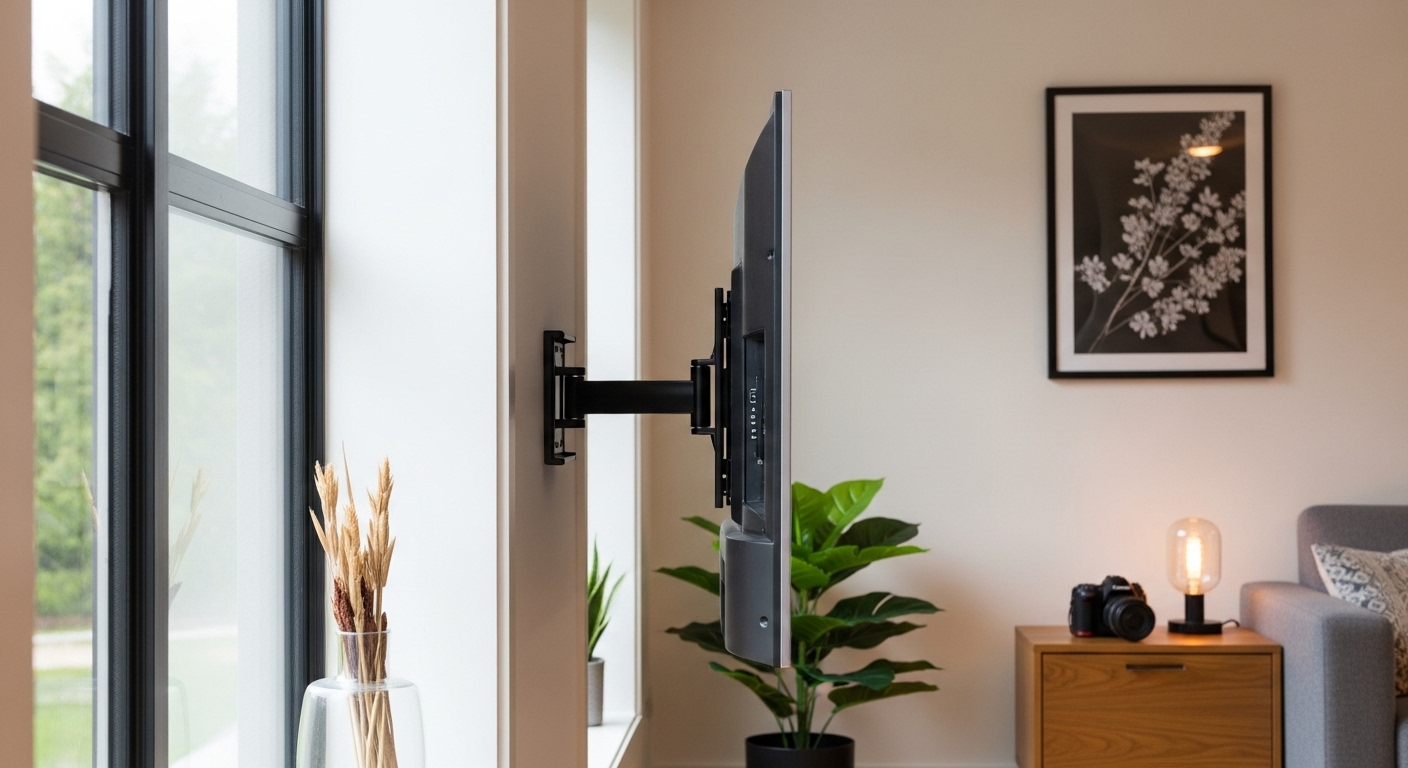 Living room TV wall mounts can be innovative in many ways because they can be rotating. It cuts down the need for a TV positioned in one place. It can be turned in different directions.
Living room TV wall mounts can be innovative in many ways because they can be rotating. It cuts down the need for a TV positioned in one place. It can be turned in different directions.
Projector Screens
 Projector screens that can rise from the ceiling are in use for theater-like experience by some homeowners. Hidden projectors and other components make turnover smooth, and the company saves money by not having to employ staff for these shows.
Projector screens that can rise from the ceiling are in use for theater-like experience by some homeowners. Hidden projectors and other components make turnover smooth, and the company saves money by not having to employ staff for these shows.
The Role of the TV Size in Placement
The only factor that is the TV’s size I that varies the position of the TV in the living room. The LTC will need more wall space and a longer distance in a bigger case. Here is the simple guide:
- 32-inch TV: 4-6 feet viewing distance
- 43-inch TV: 5.5-8 feet viewing distance
- 55-inch TV: 7-11 feet viewing distance
- 65-inch TV: 8-13 feet viewing distance
Swapping TV Placement for Different Entertainment Options
Television placement can be modified to cater to different activities. This TV can be the main attraction on a movie night. This TV can be off when a social occasion is going on, or it can be on covertly instead. These are some of the options to choose from:
- Hide the TV with a TV lift cabinet when it is not in use.
- One way you can turn the TV to different seating areas is by using a swivel mount.
- When it is not needed, you can roll the projector screen away.
The Role of Technology in the Evolution of TV Placement
Innovation is pushing for the adoption of newer attitudes towards the placement of TV in the living room. The newly launched GUI graphical interface is one of the modern software that has a myriad of options.
- Voice or your smartphone being the only source of control for a Smart TV.
- The narrow LED TV can be easily hooked up to a wall.
- Transparent TVs blend with furniture arrangements that are not in use.
Cooperating TV Placement with All Other Living Room Activities
The living room is often used for activities other than watching TV. When choosing the placement of TV sets in the living room, think about other activities like:
- Reading: Put comfortable, cozy seats with the proper lighting in a place away from the TV
- Conversation: Synchronize furniture arrangements with the people by the face-to-face seating
- Games: Make sure there is space to play various games, including board games as well as exercise games.
TV Positioning and Room Acoustics
The position of the TV in your room may affect the sound quality. The following steps are recommended to enhance the acoustics:
- Do not place the TV in the corners, as it will likely result in sound distortions.
- Utilize soft furnishings such as rugs and curtains to minimize echo.
- A validated strategy is to opt for a soundbar or a surround system for better audio.
Adapting TV Positioning to Different Seasons
The tv best position in living room may vary with the times of the year. In summer, be sure that you do not place the TV where the sun will shine directly on it. In the colder months of the year, you might need to seat yourself closer to both the TV and a heat source.
TV Position for Multi-Generational Homes
It is certainly a good idea to put the TV in the living room in a house where people of different ages live together, but one should consider many other aspects of TV placement as well. For example:
- Height: Make sure that the TV is not put at a very high level, which may be inconvenient for the elderly, or at a low level, which may be uncomfortable for the taller family members.
- Do something about the disbursal of the rays that are up to the sensitive eyes of the people.
- Of course, everyone with the weakness of sight should also be taken into consideratio,n not to be seen from farther than usual.
Conclusion
One of the primary decisions made in our living rooms when designing them is where to place the TV. Think of the room’s dimensions, lighting, the placement of the TV, and where the furniture sits. It could be located above the fireplace, on a media console, or in a corner. Never make the error of putting the TV too high or neglecting to adjust for glare. By selecting the right location, you can make everyone at home happy with a perfect TV in the room.
FAQs
Q: How high should a TV be in the living room?
A: The screen should be at eye level where the eyes are when seated. Typically, this is approximately 42 inches from the ground floor.
Q: What is the best direction for the TV in the living room?
A: The best direction to use is to keep the TV away from the windows to decrease the glare. Sit the TV in the direction of the main seating area.
Q: Can I put my TV in front of a window?
A: This is not recommended. The problem is that the glare will cause the TV screen to be too dark to view. If the need arises, one can use heavy curtains to block the sunlight.
Q: How far should a couch be from a 55-inch TV?
A: A separation of 7 to 11 feet from your TV will allow you to enjoy a better viewing experience with a 55-inch TV.
Q: Should the TV be centered on the wall?
A: Definitely, the TV ought to be centered on the wall. It will also add to the aesthetic value of the room and provide the best visual line of sight for all the angles in the room.
Reinvent your living room into the ideal entertainment space today! Use our complete guide to carry out the options for television placement, and create a stylish and comfortable room setup for your home and lifestyle. Start creating your ideal spot now!





